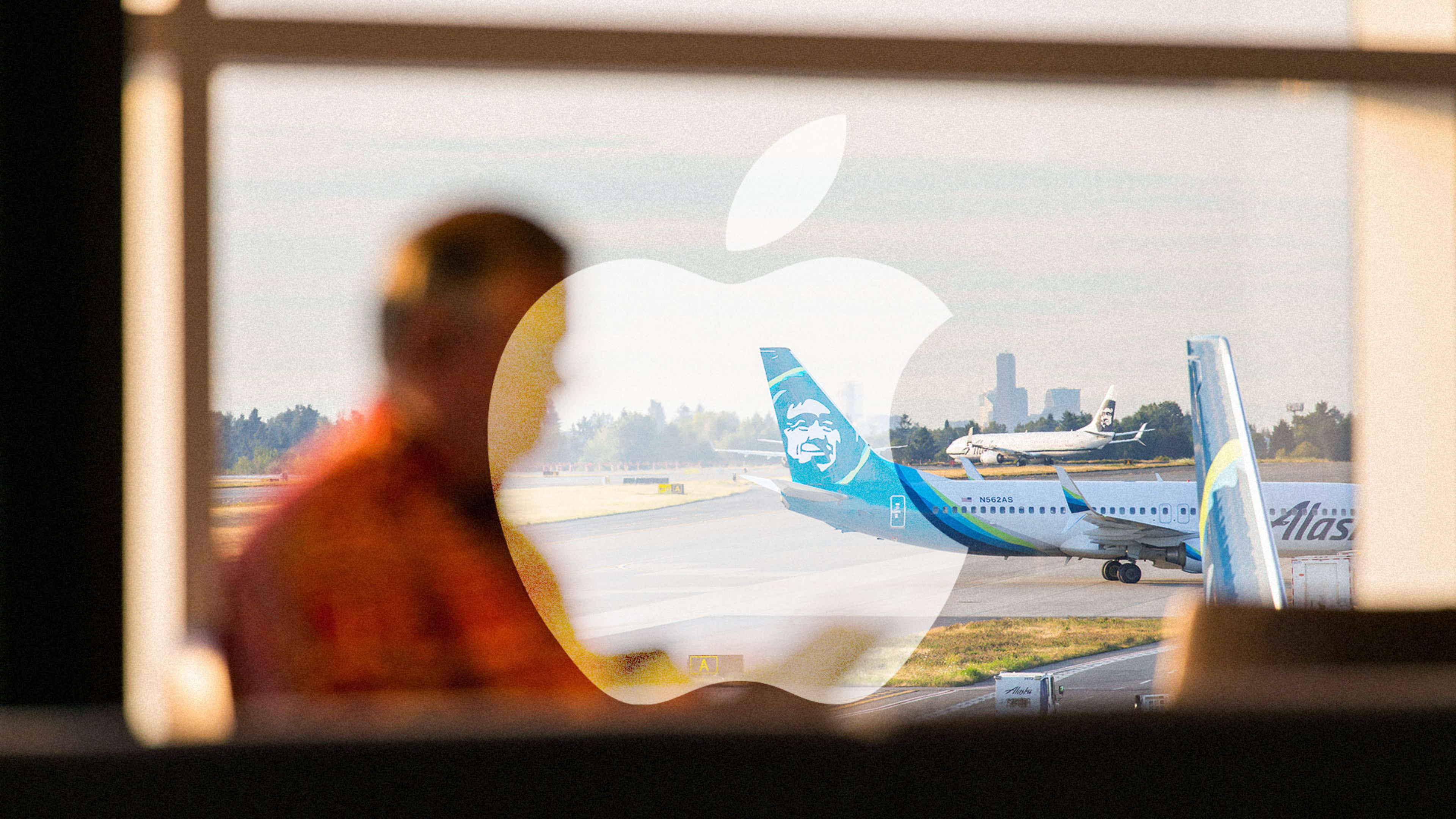At San Jose’s Norman Y. Mineta International Airport, travelers are checking in for Alaska Airlines flights using iPad Pros—and they might not even realize it.
These particular iPads aren’t anyone’s personal devices. Ensconced in tabletop stands in Alaska’s lobby area, they’re replacements for the conventional self-check-in kiosks that have been commonplace in airport terminals for the past couple of decades.
The iPad Pro check-in stations are part of a range of new technologies that Alaska is field-testing in San Jose. They also include self-serve drop-off points where you can hand over checked bags once you’ve tagged them. And passengers on departing international flights can choose to use facial recognition at the gate rather than wrestle with passports and boarding passes, shaving precious seconds off the embarking process.
“What we’re doing in San Jose is really testing our lobby vision out and using it as a tech incubator to test various ideas,” says Charu Jain, Alaska’s senior vice president of merchandising and innovation. The airport’s location in the heart of Silicon Valley makes it ideal for reaching folks who are eager to get early access to the latest tech, she adds. But the airline’s goal is to turn its learnings into a new, time-saving experience that will benefit travelers everywhere it flies.
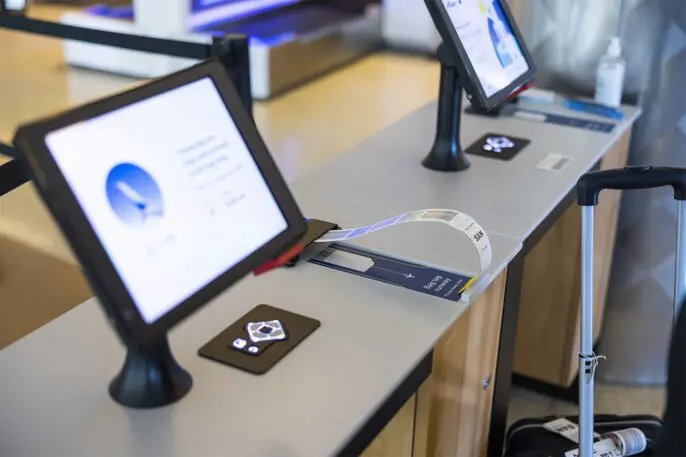
Charu Jain, Alaska AirlinesThis is the first time that a bag-tag printer’s been connected to the iPad.”
Alaska’s check-in stations are only examples of Apple’s tablet gaining traction in enterprise contexts. A few weeks ago, when I bought new eyeglasses at a Warby Parker store, a staffer stepped me through the entire process—from recording my prescription to checking my insurance—on an iPad Mini. Other major companies that have quietly latched onto iPad Minis for customer service include Capital One, P.F. Chang’s, and American Eagle.
An old pro at iPads
Alaska Airlines has long had a solid claim on being one of the airline industry’s earliest adopters of new technologies. In 1999, for example, an Alaska passenger named Kathy Bloom was the very first person to check in for a flight over the internet. The company also made news when it replaced bulky flight manuals with iPads in 2011.
Today, Alaska’s flight attendants, customer service agents, and maintenance crews all use iPads. And of course, the airline has an iOS app for travelers—-which Jain says is particularly critical because most of its passengers use iPhones. (Sorry, Android fans.)
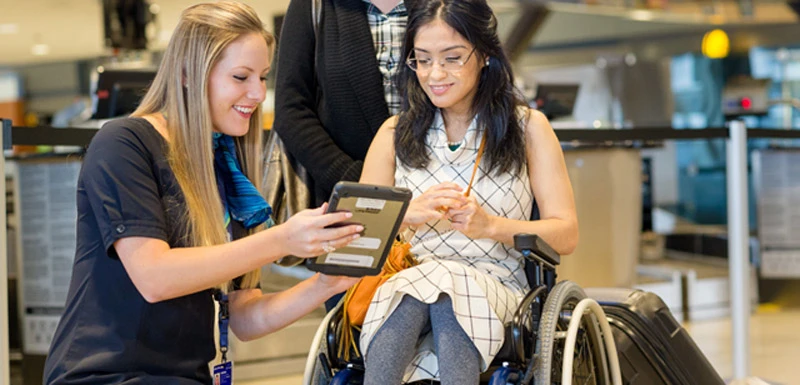
As a tool for personal creativity and business productivity, one of the iPad’s greatest strengths is the App Store’s bounty of powerful software. For Alaska’s check-in project, however, support for many apps was beside the point and getting a few things right was essential, “Building on the iPad, we have been able to say, ‘What is that iPad for?'” explains Jain. “So, rather than build a hundred things, we’re really building the things it’s meant for at the airport.”
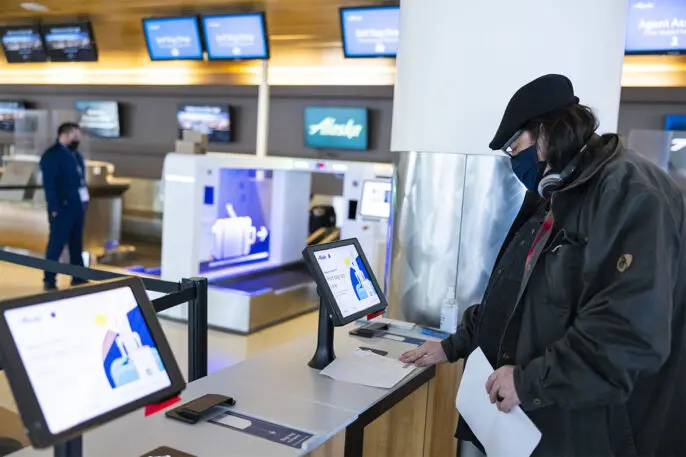
For all its tendency to describe the iPad as a piece of sorcery, Apple acknowledges that getting huge customers such as Alaska comfortable with embracing its tablet requires addressing some decidedly real-world concerns—ones that weren’t part of the tablet’s original mandate.
“In addition to the hardware side of things and the amazing apps that folks build, you have to be able to execute all of these things at a pretty massive scale, because these deployments are really big,” says Jeremy Butcher of Apple’s enterprise product marketing team. “And so being able to automate configuration and setup, and if things go wrong, being able to fix them really quickly—all of that is what we’ve invested in quite a bit over the last few years.” (This manageability is equally vital to schools, an important iPad market that Apple has tended to celebrate more publicly than its enterprise wins.)
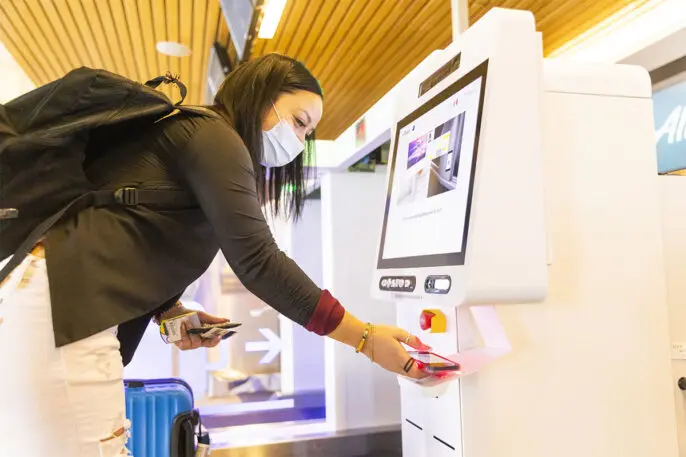
Jain expects Alaska to take two to three years to fully roll out the tech it’s incubating in San Jose. (At some airports, it shares check-in kiosks with other airlines and iPads won’t be involved, though the software experience will be similar, she says.) Further challenges lie ahead: In Hawaii, for example, airports have an open-air setting and Alaska’s iPad stations will have to prove themselves outdoors in sultry weather.
“We will probably do some more [testing] work around it,” says Jain. “But right now, what we are seeing is that it’s keeping up really well with the airport environment.”
Recognize your brand’s excellence by applying to this year’s Brands That Matter Awards before the early-rate deadline, May 3.
